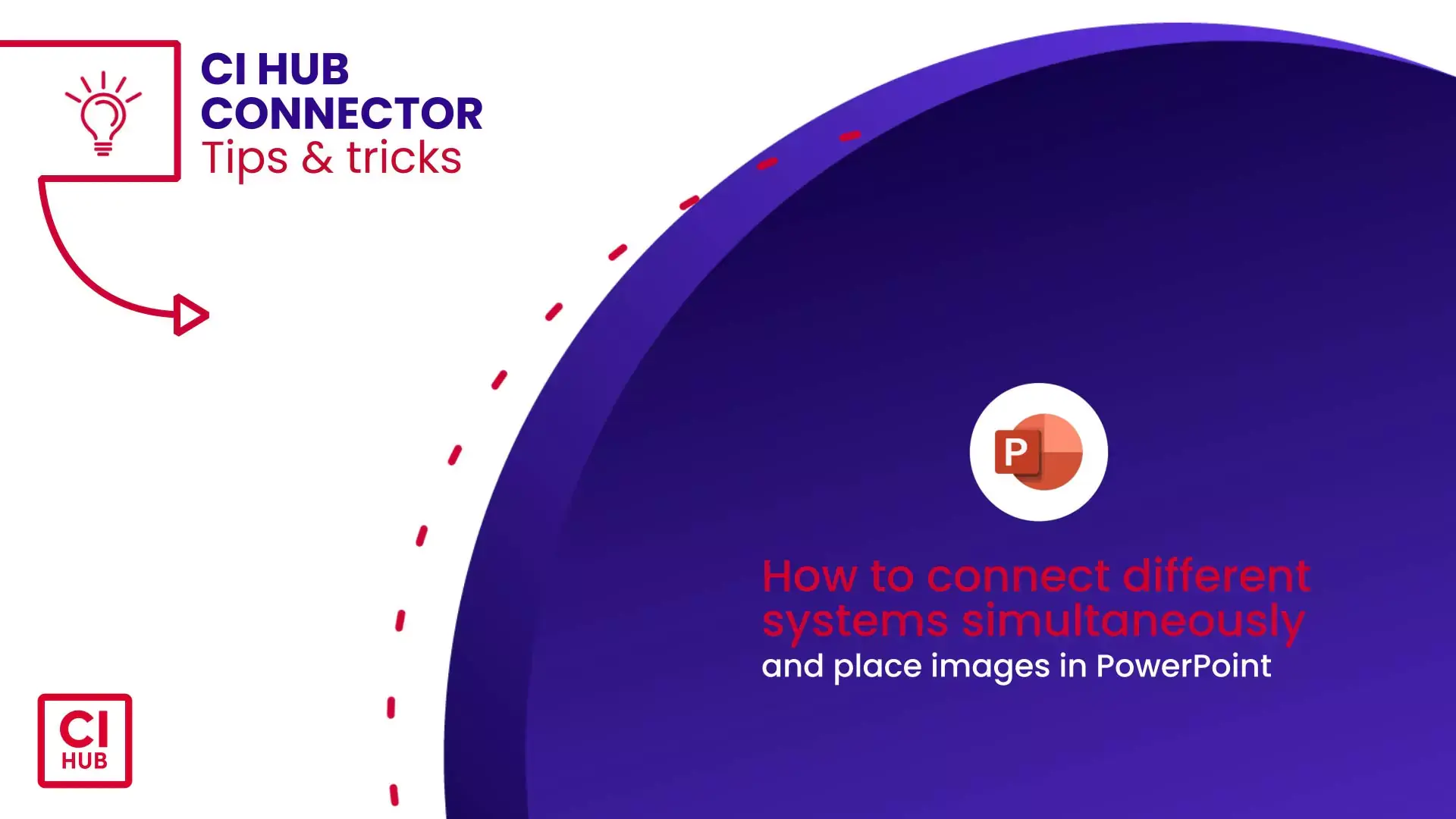
April 28, 2022
How to connect different systems simultaneously & place images in PowerPoint
Microsoft PowerPoint is one of the key tools for every office. But creating presentations can become a challenge when you need to source images from different drives, DAMs or other resources. In this video, you will learn how to use the CI HUB add-in for Microsoft PowerPoint to access and incorporate images quickly and texts from various systems directly within your presentations.
Step 1: Open the CI HUB Plugin on PowerPoint
- Install CI HUB into your device.
- Open Your PowerPoint application.
- Once PowerPoint opens, check the ribbon. You will see a new tab added alongside other tabs like “Home”, “insert”, and “Design.” This new tab will be labelled “CI HUB.”
- Click on the CI HUB tab once you locate it. This will activate the CI HUB Add-in within your PowerPoint workspace.
If you are using CI HUB for the first time, you may require a setup process after clicking the “CI HUB” tab. In that case, follow any on-screen instructions provided by the add-in. Sometimes, you may need to restart your PowerPoint application before the “CI HUB” tab appears.
Step 2: Connect to Different Systems
CI HUB acts as a bridge to provide you with a single platform to access and manage your digital assets across a wide range of storage and creative apps such as Adobe Creative Cloud, Microsoft Office 365, Cloud Storage Platforms like Google Workspace, and DAMs (Digital Asset Management Systems). To connect CI HUB with different systems, follow these steps:
- Launch PowerPoint and navigate to the “CI HUB” tab.
- Look for a configuration menu within the CI HUB interface. It might be labelled “Connection,” “Accounts,” or something similar.
- Locate the specific system you want to connect to, like the DAM provider or Getty Images.
- Follow any on-screen instructions to complete the setup process.
- You can also repeat this process to connect multiple systems to CI HUB.
Step 3: Access Your Digital Asset Management System
To access your Digital Asset Management (DAM) system and leverage the full-text search feature within CI HUB Add-in for PowerPoint:
- Open CI HUB interface
- Locate your connected DAM system.
- Once located, click on the corresponding tab, icon or menu, and all the assets stored within your DAM system will be displayed.
- CI HUB boasts a powerful full-text search bar within the DAM system section. It allows you to search for specific assets relevant to your presentation.
- Type relevant keywords or phrases related to the asses you need
- A full-text search will return a list of assets from your DAM system that match your keyword.
Once you find the desired asset through search, click on it for further use.
Step 4: Selecting Assets for PowerPoint
Not all assets are created equal. Some file formats, like Photoshop files (PSD), can be very large, and as vectors, cannot be used in programs like Word and Powerpoint. Here’s where CI HUB comes in:
- When you select any image from your DAM system or any other connected source within CI HUB, the Add-in automatically analyses the file format and size.
- If the original asset isn’t ideal, CI HUB will show a low-resolution version of the same asset, and enable you to use a raster version of the image if it is a vector (for example, creating a .JPG from a .PSD.)
- This ensures your presentation runs smoothly and looks visually appealing.
Step 5: Format Your Images and Texts
Traditionally, incorporating images with text elements into PowerPoint is a manual process. You might need to:
- Insert the image
- Add a separate text box.
- Position the text box on top of the image and manually adjust its size and alignment.
CI HUB offers a smarter approach to integrating images with texts:
- When you choose an image from your DAM system, the CI HUB add-in analyses the asset.
- If the image includes text, CI HUB recognises those elements within the image file.
- CI HUB automatically creates a text box within the PowerPoint slide that overlays the image.
- This saves time, improves accuracy, and ensures consistent formatting.
Step 6: Access Your Desired Images
WIth CI HUB, it’s easy to navigate between connected systems. To switch from one system to another follow these steps:
- When you open the CI HUB interface, there will be a dropdown menu, icon, or tab system representing each connected source.
- Look for an option that indicates your other connected drive, DAM or stock image provider within the navigation section of the CI HUB interface.
- Selecting the option should switch from your original system to the new one with a click.
Step 7: Placing Images and Texts in PowerPoint
Once you’ve selected an image you want using the full-text search, placing it in your PowerPoint slide is simple.
- Click on the image or text you want to include in your slide.
- Simply click, drag, and hold the image or text from the CI HUB interface onto your PowerPoint slide.
- You can freely move, resize, and rotate the image or text element on your slide to achieve the desired layout.
Conclusion
This explanation has covered the functionalities of the CI HUB Add-in for PowerPoint. We’ve seen how it streamlines your workflow and empowers you to create impactful presentations. It enhances your presentations by offering centralised access to over 50 leading systems all within a single interface, with effortless searching with the full-text search feature, seamless integration with drag-and-drop function, automatic formatting text elements within images, and eliminates the need to switch between specific application and websites.
To learn more about CI HUB, its functionalities, and the full list of supported systems, visit their website at https://ci-HUB.com/.

Article by
Gerd Glaser
CXO, Chief Experience Officer